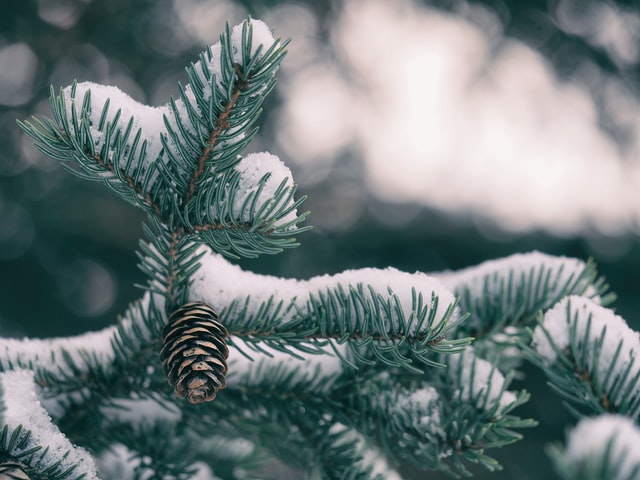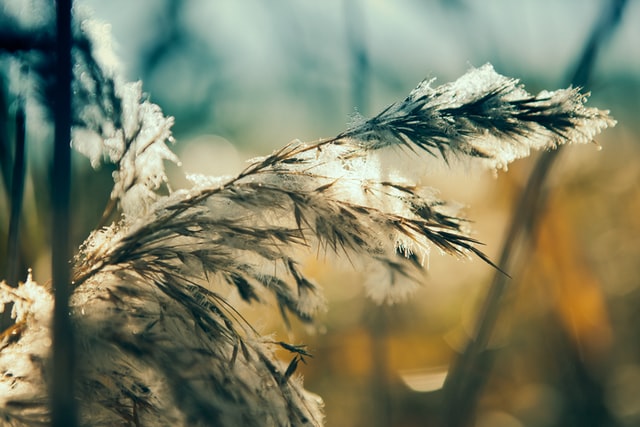There is a common preconception that the most radiant plants and the most colorful flowers are unique to spring. This is not entirely true, because just like the warm seasons have their seasonal plants, there are winter plants that cover that gap where other species lose foliage, wither and replenish energy.
There are specific plants for each season and not all of them have to share the same life cycle or type of resistance. Just as a spring flower cannot bear the cold, there are winter ones that cannot bear the heat. That is why we can rotate different species in our personal garden to always show off impressive plants in any month of the year.
Contents
What are outdoor winter plants?
They are plants that, in general, are more resistant than the average species, and that instead of taking advantage of the heat to survive; they know how to cope better with cold temperatures. These types of plants are mostly perennial plants and their ability to withstand adversity is clear.
This makes them ideal candidates to decorate our balconies, terraces, and exteriors and is that, unlike the plants that bloom in spring, these species just bloom with the winter cold at the end of the year.
But of course, this does not mean that they are immune to the most extreme frosts. Like all living things, there is a limit to the cold that can be tolerated, but plants, flowers, and shrubs considered winter, can cope with temperatures below 0 without any problem.
Do winter plants keep flowers?
If it is trees or perennials, they will not lose their leaves drastically no matter how cold the environment exists, even most only bloom under the cold of winter to rest in warmer seasons.
But it must be taken into account that there are flowers that despite being able to bloom in winter, are not able to maintain their natural oils as they would in other seasons of the year, which weakens the flower in case it is wanted to use as an infusion. Anyway, the main reason why we want to take care of these plants is precisely so that our garden does not lose color in cold times of the year.

The best winter plants to decorate balconies and gardens
There are innumerable families and types of winter plants whose habitat is the cold. That is why we have prepared a list with the most important ones and we will tell you which the fundamental species that you should ever plant are without a doubt? Not only for their beauty but for the variety and even health benefits that they can bring:
Geraniums (Pelargonium sp)
Highly in demand, they are lively flowers with tongue-shaped petals that grow in clusters, endowed with great thermal resistance. They are able to withstand moderate exposure to the sun and survive short-term frosts.
Azaleas (Rhododendron)
It is a shrub that blooms in winter and does not grow very well in hot or sunny climates. It’s striking, usually, pink petals have a scaly and radiant appearance. It is capable of withstanding -5 degrees, but more than that is detrimental to your flowers.
Brunnera (Brunnera Macrophylla)
It is a plant that loves shade and that blooms in spring, supports the cold of winter and although its winter flowers do not stand out as they are very small, its predominant aspect is its huge heart-shaped leaves, with silver tints and sinuous spots of color. Green makes them highly showy.
Almond trees (Prunus dulcis)
One of the most interesting medium height and medium height fruit trees you can have in your yard. It blooms precisely in winter and depending on how well it blooms, the better the number of almonds in its harvest will be, in the best of cases this tree can withstand temperatures below -10 degrees.
Persian or Alpine violets (Cyclamen persicum)
Winter flower wherever there are, this annual plant has violet or pink colors with whitish edges on its petals. It is ideal to withstand climates below 15 degrees, it should not be exposed to the sun for long and its watering is not demanding, it generally flowers in winter.
Hydrangeas (Hydrangea)
Considered one of the most beautiful, hydrangeas are a group of shrubs suitable for low temperatures and little exposure to the sun. Its flowers grow in groups of several small in the form of almost spherical racemes, and they present colors from the soft red to the deepest blue. It requires constant lighting (not direct sun precisely) and constant watering depending on the humidity of the soil.
Ornamental cabbages (Brassica Oleracea)
Curious to say the least, it is known as ornamental cabbage because of its great resemblance to this vegetable, but not to be confused as it is not edible, instead, it is a different flower from the common with different colors and curled petals. Ideal for winters as it is slightly frost-resistant.
Thoughts (Viola x wittrockiana)
Ornamental flowers are appreciated for their multiple ranges of colors that will make you feel like spring during cold periods. These little blooms are quite persistent to snow; it is a great choice to get them in different colors.
Firs (Abies Alba)
Iconic pine, Christmas symbol par excellence, this tree with a conical silhouette of very long duration is one of the few plants that can withstand the most extreme and inclement climates, it is not used to heat and its ideal growth is in cold areas. Planted in your garden it can be an excellent long-term ornament that will leave a great scent on your forehead or garden.
Primulas (Primulas Acaulis)
Small flowers are ideal for pots and indoors, they do not require much light or water, since the sun can dry them. They are from the autumn-winter period, although they also grow in spring, they present multiple colors with a distinctive yellow center on their petals; however, they do not resist frost very well.
Daffodils (Narcissus)
Precious and short-stemmed to have in pots, they are coveted when they bloom in winter for their yellow bell-shaped petals, they resist the cold only as long as it is not below 0 degrees Celsius.
Callas (Zantedeschia aethiopica)
A beautiful plant whose flower will undoubtedly add variety under inclement cold weather, as it grows from a rhizome as ginger does, the flower is in fact a central stem (spadix) surrounded by “petals” that are actually spates, having colors different from each other they form a great contrast, and unlike the others, this one is quite resistant and not exclusive to cold climates. It can withstand temperate and icy environments alike.
Holly (Ilex aquifolium)
A shrub that screams Christmas time everywhere, it is characterized by having pointed dark green leaves and small red berries not suitable for human consumption due to their toxicity. It is a slow-growing tree and matures during the cold months of the year
Lavenders (Washers)
Ideal flower, this plant with tiny spike flowers with intense purple and lilac colors, blooms in spring and summer, and can even keep them in winter.
It supports severe climates from both cold and heat, managing to withstand frost as well as a winter tree. In addition, its flowers are a powerful calming against insomnia and anxiety, making it a famous flower and requested for its infusions.
What Do You Think Of This List Of Winter Plants?







